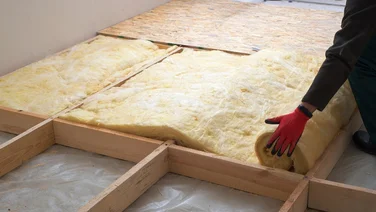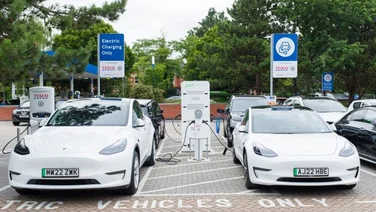- Creating an eco home can cut your energy bills by £2,175 per year
- Your property’s value can rise by up to 25%
- You can massively reduce your carbon footprint

With the UK transitioning away from fossil fuels for electricity generation, and wind now generating the majority of our electricity, there is more we can do as homeowners to help with the energy transition.
By investing in our homes to make them less reliant on fossil fuels, we can reduce our energy bills in the process.
For example, installing solar panels means you can generate renewable electricity for your home, which can be used immediately, stored in a solar battery, or exported to the National Grid – cutting your energy bills by around 70% in the process.
Taking advantage of schemes such as the Smart Export Guarantee (SEG) means you can sell your extra green energy back to the grid, further decreasing your bills. ‘But are SEG payments taxable?‘ we hear you ask. Well, unless you’re generating a huge amount of electricity, the answer is no.
Meanwhile, installing a heat pump means that you can heat your home and hot water without burning natural gas, improving air quality and reducing your greenhouse gas (GHG) emissions.
By adding modern, low-carbon technology to a property, you can make it more cost-effective, eco-friendly, and valuable. Here’s what that would look like.
What is an ‘eco home’?
An eco home is a property that uses renewable technology to ensure its carbon footprint is minimal.
Ideally, this would include both its construction and daily energy usage, so you’d use low-carbon supply chain and building methods to create a well-insulated home powered by renewable energy.
According to the latest data from the Office of National Statistics (ONS), the total household emissions in 2020 were recorded at 133 million tonnes, which comprise almost 40 per cent of the total emissions in the UK.
Residential emissions are the only major category not to have fallen since 2014, mostly because of high upfront costs and a general lack of effort and financial assistance from the government.
An eco home releases practically zero emissions – and thanks to falling costs, this concept is now possible for more people.
How much does it cost to create an eco home?
It costs £33,615 for the average household to create the complete eco home – but only if you go all the way.
You can also make these improvements gradually, instead of buying all of these green products at the same time.
These figures are based on a semi-detached, three-bedroom house – the most popular property type in England and Wales.

* Based on an electricity price of 30.11p per kWh
§ When combined with solar panels
‡ When compared with charging your electric vehicle at a public charge point
What are the benefits of creating an eco home?
An eco home can cut your energy bills by 76% on average, if you make all the improvements we’ve listed.
It’ll also have the benefit of improving your EPC rating, which can raise your property’s value by as much as 14%. For the average semi-detached home, that’s a £41,900 increase.
Plus, while energy prices continue to rise and the global focus on mitigating climate change intensifies, houses with high EPC ratings will be increasingly attractive to buyers.
A property that comes with a heat pump or a pre-installed set of solar panels will therefore be more appealing, easier to sell, and more valuable than a home without green technology.
For instance, a house with solar panels costs between 0.9% and 2% more than the same property without any panels, according to a study by Solar Energy UK and Cambridge University.
This alone would add as much as £6,000 to the value of a typical semi-detached house.
How to make your property an eco home: step by step
Here are the easiest ways to make your home greener and more energy-efficient, followed by some more expensive – but extremely effective – methods:
- Smart thermostat – Smart thermostats are connected to your wifi network, which allows you to decide how and when to heat your home with just a tap on your phone or a few spoken words. This reduces unnecessary energy usage and lowers your bills, which is perhaps why 1.7 million households in the UK already own one.
- Roof insulation – You can’t cut your energy bills without effective insulation, and your loft is a great place to start. 25% of the average home’s heat is lost through its roof – so insulation in this area is vital. An installer just needs to pop some insulating material – usually mineral wool, organic foam, or rigid insulation boards – between the beams on your roof. Roof insulation costs are usually affordable, especially compared to some home improvements.
- Cavity wall insulation – If your home was built after the 1930s, it probably has cavity walls – that is, two walls with a gap in between. All an installer has to do is insert a heat-retaining material into the space between the walls and seal it back up again. Insulating your home properly also means you’ll be able to keep yourself warm in winter and cool in summer – though getting this insulation costs £2,700 on average, which is steeper than roof insulation.
- Double glazing – It can save you money on energy bills, keep you warm during the winter, and reduce your carbon footprint. The style and size of the window will alter the price tag, as will the frame material. For example, uPVC windows are usually cheaper, while aluminium or steel windows are more expensive.
- Solar panels – Solar panel costs vary depending on your needs, but they will repay your investment within 15.66 years, on average. They’re essential for an eco home – not only do they typically cut your electricity bills by 64%, but they also power other green products like heat pumps and electric vehicle chargers.
- Solar battery – Solar batteries capture excess electricity that your solar panels generate, which you can either use or sell to the grid. It’s not essential to install a storage battery in an eco-home, but it’ll mean you can use around 80% of your solar electricity, instead of 50%
- Heat pump – Heat pumps are the inevitable successor to gas boilers in the UK, and the government is backing them with the Boiler Upgrade Scheme. Heat pumps are at least three times more efficient than fossil fuel boilers because they draw warmth from the air, a body of water, or the ground. They only need to use a small amount of electricity on top of one of these natural sources of heat.
- Electric vehicle charger – If you have an electric vehicle, it’s a no-brainer to get one of the best home chargers, as you’ll typically save 43% compared to using public charging stations.
Are there any grants for eco homes?
Various grants and financial assistance programs were available to support eco-home improvements. These included the ECO4 and ECO4 Flex schemes, the Home Upgrade Grant (which ended in March 2025), the Warm Homes Local Grant, and the Boiler Upgrade Scheme.
- Solar panels grants: ECO4, Warm Homes Local Grant and the Home Energy Scotland Grant and Loan
- Insulation grants: ECO4, Warm Homes Local Grant, Great British Insulation scheme, Nest (Wales), and Home Energy Scotland
- Double glazing grants: ECO4, Warm Homes Local Grant, Nest (Wales), and Home Energy Scotland
- Electric vehicle charger grants: EV Chargepoint Grant, Workplace Charging Scheme, On-street Residential Chargepoint Scheme, and the Scottish Home Chargepoint Grant
- Heat pump grants: Boiler Upgrade Scheme, ECO4, Warm Homes Local Grant, Nest (Wales), and Warmer Homes Scotland
Future eco home trends
Renewable technology is always developing and improving, so naturally, there are better products in the works. Here are the technologies the next generation of eco home might use.
Infrared heating panels
Infrared heating is still pretty under the radar. The system works by releasing radiation through large panels, which are propped up on the walls or ceilings of a home. Unlike conventional boilers, this radiation then heats objects directly, rather than just warming the room – but don’t worry, these panels use ‘far infrared’, which is perfectly safe.
If you’re considering getting infrared panels for your eco-home, prices will fluctuate depending on the type of panel you go for, as well as its size, design, and wattage.
Generally, a 600 W (watt) panel should be enough to heat a small room and will cost approximately £230. If you were to apply this to a three-bedroom house, that means you’ll be paying around £2,000–£2,500 for an infrared heating system.
Hydrogen boilers
A hydrogen boiler works similarly to conventional boilers, except it burns hydrogen instead of natural gas. This creates hot flue gases that can be used to heat water, which can then either be stored for later use or pumped to your radiators.
But before you get too excited, you should know that hydrogen boilers are still in the prototype stage.
Although there aren’t any official hydrogen boilers on the market, manufacturers are confident they won’t cost any more than natural gas boilers when they do appear.
Microwave boilers
Microwave boilers are very similar to the conventional boilers that most UK homeowners will be used to, but instead of using combustion to generate heat, they use microwaves – a type of electromagnetic radiation.
Although this innovation shows promise for the future of home heating, unfortunately the world’s only microwave boiler is still in the prototype stage.
To give people a rough idea of how much it’ll cost them, Heat Wayv – the company behind the world’s only microwave boiler – stated that a unit for a three- or four-bedroom home would cost roughly £3,500.
Summary
- An eco house uses renewable technology like solar panels and a heat pump to lower its carbon footprint from electricity and heating as much as possible
- Ideally, an eco house is also built sustainably, using a low-carbon supply chain and eco-friendly building methods to create a well-insulated home powered by green energy
- With government grants supporting households, it’s also becoming increasingly affordable to reduce your emissions
- You usually don’t need any extra planning permission to build or retrofit an eco house. Using sustainable building materials and methods doesn’t require any specific planning permission, and you also generally don’t need planning permission to get green technology like solar panels, insulation, or heat pumps
- Eco homes cost more than regular houses, but not by a significant amount – and the energy bills savings usually make up for this extra expense.







